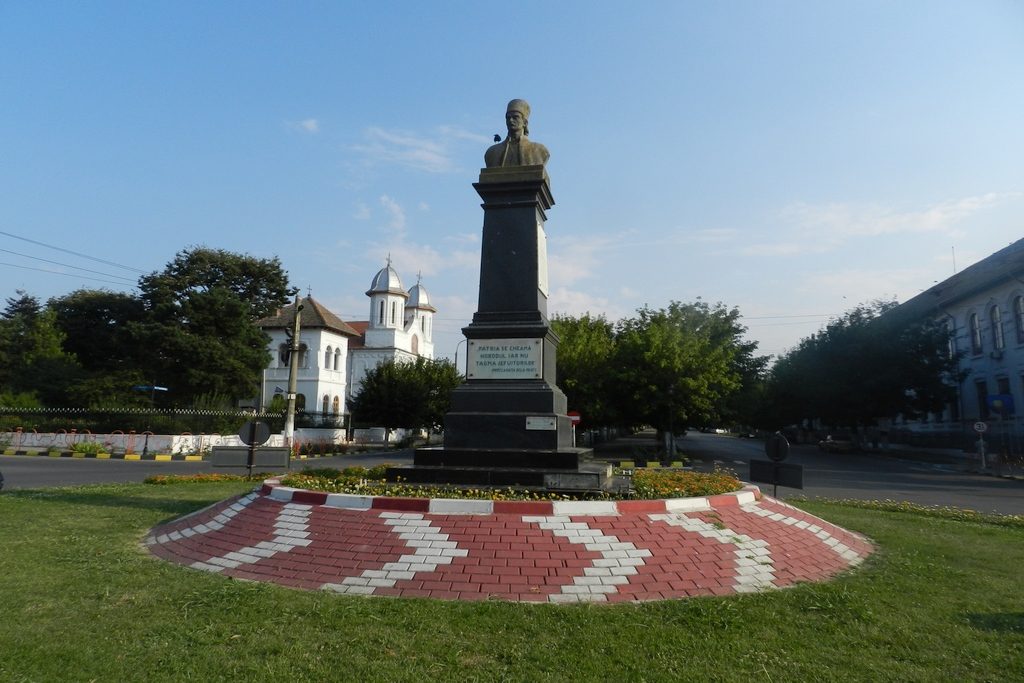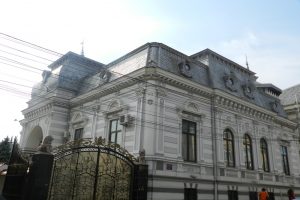

The bust was built up in the memory of Tudor Vladimirescu. It was born in the village Vladimiri (Gorj), in a family of freeholders. He studied and he learned the Greek language in the house of the aristocrat Ioniță Glogoveanu, from Craiova, who made from the intelligent, and the qualified administrator property boy and who disposed him in the business of merchantry, especially at the kettle export.
Tudor Vladimirescu constituted a fortuned by buying land, making commerce on his own. He emancipated from the service of Glogoveanu entering among the pandours – the army with semi-permanent obligations – and participates at the Russian – Turkish war of 1806 – 1812, compensated by the Russian officials with the cavalry Order Vladimir, the IIIrd class.
In 1806 he was named head on the field at Cloșani, namely administrator of a mountain district, occupation which he will occupy until 1820.
Knower of the German language, Tudor Vladimirescu, was able to follow the political problems which were debated in the press in the capital of the Austrian Empire. Come back in the country at the beginning of the year 1815, Tudor found out the fact that at the ottoman garrison from Ada Kaleh, which traveled in the counties Mehedinți and Gorj, destroyed his household from Cernețu and took all his servings.
Present then in the country’s capital for supporting a process for property in front of the Divan, Tudor finds out about the decision Eterieide, of starting to move the freeing of Greece. Considering the opportune moment for rising the people for a battle, he has some discussions with the representatives of Eteria concerning the military cooperation, for the “pandours to facilitate the passing of Ipsilanti over the Danube”.
He signed an agreement with the Protection Committee through which Tudor was going to “rise the people to the arms”, having as objective the removal of the Phanariot regime. The extreme revolutionary content of the “Proclamation from Padeș” scared the aristocrats, who send the troop bodies in order to stop him. Tudor permanently ensures bashaws from the Danube and from the Ottoman Gate that the people revolted because of the “terrible sufferings endured because of the uniting of the aristocrat natives, with the ones of the time sent as princes and commanders of these people”.
Entering into Bucharest in front of the “people gathering”, he is received with enthusiasm by the masses of people from the capital. He actually assumes, in the spring of the year 1821, the command of the people, being names by the people “Prince Tudor”. The presence of Alexandru Ipsilanti at Bucharest in front of an undisciplined army, after his action was disavowed, as it was the one of the Romanians, by Russia, put him into a difficult situation. Tudor demands to the leader of the Eteria to pass the Danube, as he had initially promised, for Wallachia not to be transformed into a theater of war.
The leaders of the eterists set up a plot in order to remove him. Removed by the betrayal from Golești, on the 21st of May, Tudor was killed by the leaders of the eterists at Târgoviște, on the night of 27th to 28th of May, being probably blamed by the collaboration with the Ottomans against the eterists, fact which the history has never confirmed. He had as enemy the powerful lieutenant – colonel Dimitrie Papazoglu, decorated at Paris by Alexandru I for special qualities in executing the military maps.



